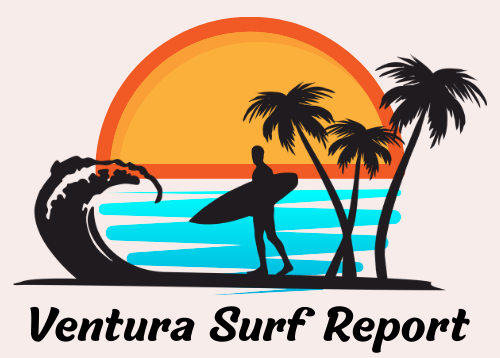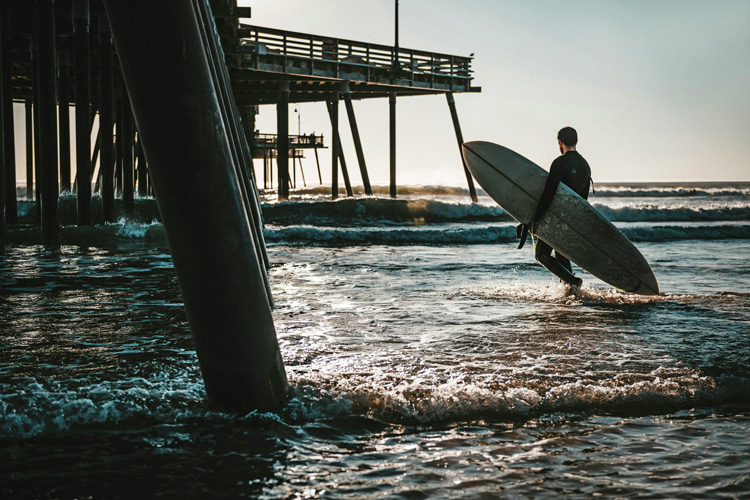
If you’re mostly an urban surfer, how do you know you’re riding waves in safe, unpolluted waters? Are there any indications that you could be putting your health and life at stake?
More and more surfers worldwide report sickness episodes after being in contact with near-urban areas and industrial sites.
The Blue Water Task Force (BWTF) is a volunteer water quality monitoring program run by the Surfrider Foundation.
It’s thanks to Surfrider that many of our cherished beaches and water playgrounds are still relatively accessible and usable.
The non-profit environmental organization has been successfully working to protect the world’s oceans and coastlines since 1984.
The BWTF is one of their several tools to monitor the quality of the waters where people fish, swim, and surf.
Across the world, other regional and national non-governmental organizations, like Surfers Against Sewage in the UK, also check if seawater is safe for recreational purposes.
All these independent entities fill the usually large gaps left by state and local agency programs.
But what exactly does being in “clean and safe ocean water” mean? What could potentially cause harm to coastal waters and, consequently, surfers?

Why Enterococci Matter
Every week, volunteer citizen scientists collect samples from nearly 600 ocean, bay, and creek-mouth sites across North America and send them to more than 60 labs in the BWTF network.
In 2024 alone, those teams ran over 9,500 tests for enterococci, the fecal indicator bacteria that live in the guts of mammals and birds and only appear in water when sewage or animal waste has washed in.
It’s a huge pro bono public service that is rarely noticed and praised. However, the data and results collected prevent hundreds of thousands of people from getting sick.
The U.S. Environmental Protection Agency first embraced enterococci in its 2012 Recreational Water Quality Criteria because studies consistently show that higher counts are linked to more surfer/swimmer illnesses.
Enterococci themselves rarely make you sick, but they’re your canary in the coal mine.
When these bacteria spike, you may also be paddling through norovirus, Giardia, or Salmonella, pathogens that can trigger stomach flu, nasty rashes, ear and eye infections, and more.
Unseen Hazards Behind the Waves
After rainstorms, runoff funnels pet waste, bird droppings, and leaking sewer lines straight into surf zones.
Combined-sewer overflows and aging septic systems can dump raw human waste onto beaches, elevating enterococci counts for days.
Underneath that foamy curl might lurk parasites like Cryptosporidium or viruses that don’t show up on routine tests but follow the same pollution trails.
Kids, seniors, and anyone with a cut or weakened immune system are most vulnerable. This is not a possibility – this is real and happens every day.
One spill can send gastrointestinal bugs racing through the lineup, ruin your week with flu-like aches, or leave you battling a stubborn skin infection.
The episodes of eye and ear issues, gastrointestinal problems, and other health complications are very common among surfers, whether they’re in California, the East Coast of the USA, Europe, or even Australia.
Reading the BWTF Traffic Light
To help water body users safeguard their health, Surfrider created a BWTF map that is built around a simple three-color system that mirrors a stoplight:
- Green: Enterococci levels are low or undetectable, meeting every public-health benchmark and posing minimal illness risk;
- Yellow: Counts sit near the EPA’s thresholds. Most surfers will be fine, but sensitive folks should think twice before diving in;
- Red: Bacteria exceed safe limits. That’s your cue to sit on the sand, because every paddle stroke through failing water brings higher odds of infection;
These thresholds come straight from the EPA’s 2012 criteria.
They recommend no more than 35 CFU/100 mL (geometric mean) and 130 CFU/100 mL (single-sample maximum) of enterococci in marine waters.

How to Keep the Stoke Safely
Surfrider’s interactive online map features the Blue Water Task Force’s live results. So, before you wax up, check them at bwtf.surfrider.org.
If the dot on your favorite break is yellow or red, consider another lineup until it turns green.
Alternatively, and if available, check your county health department site.
After rainfall, give your beach at least 72 hours in dry climates: 24 to 48 hours may suffice in rainier regions, but always confirm local guidance.
On the sand, steer clear of storm drains, creek mouths, and any flowing rivulet entering the sea.
Although these areas could produce amazing waves, they’re usually a more concentrated source of pollutants.
Finish your session with a freshwater rinse: washing off salty residue also flushes away lingering microbes before you grab lunch or hop back on the road.
Volunteer Science in Action
Since its debut in 1990, Surfrider’s BWTF has grown into North America’s largest volunteer beach-monitoring network: 60+ labs, over 9,500 annual samples, and 534-plus testing sites by mid-2024.
Every sample is a data point that pinpoints pollution hotspots, fuels community action, and helps local agencies close water-quality gaps.
When you see that green light over your break, know it’s backed by real people in labs – students, retirees, and pro surfers alike – who care as much about clean waves as you do.
Surf smart, and stay informed. Your health always comes first.
Words by Luís MP | Founder of SurferToday.com


Leave a Reply